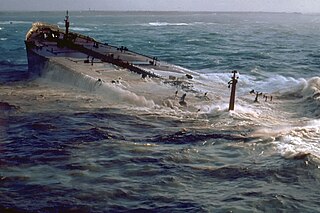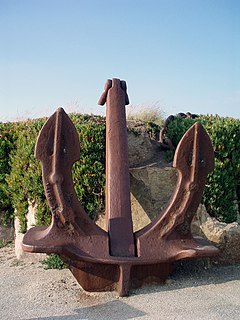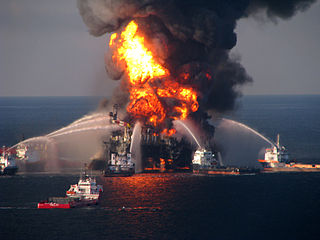



The Mega Borg Oil Spill occurred in the Gulf of Mexico on June 8, 1990, roughly 50 miles off the coast of Texas, when the oil tanker Mega Borg caught on fire and exploded. The cleanup was one of the first practical uses of bioremediation.




The Mega Borg Oil Spill occurred in the Gulf of Mexico on June 8, 1990, roughly 50 miles off the coast of Texas, when the oil tanker Mega Borg caught on fire and exploded. The cleanup was one of the first practical uses of bioremediation.
At 11:30 PM on the evening of Friday June 8, 1990, [1] an explosion in the cargo room of the Norwegian oil tanker the Mega Borg “ruptured the bulkhead between the pump room and the engine room”, [1] causing the ship to catch fire and begin to leak oil. [2] The 853-foot-long, 15-year-old vessel was about 50 miles off the coast of Galveston, Texas when the explosion occurred. [3] The weather at the time was calm and the tanker had easily passed Coast Guard safety inspections in April earlier that year. [3] While the direct cause of the engine room explosion remains unknown, the initial blast occurred during a lightering process in which the Mega Borg was transferring oil onto a smaller Italian tanker, the Fraqmura, in order to then transport the oil to Houston. [2] This transfer was necessary, as the Mega Borg was too large to dock at the Texas port. Three million gallons of the total 38 million gallons of light Angolan Palanca crude oil on board the tanker were able to be transferred to the Fraqmura before the blast. [4] Two days after the initial blast, there were five successive explosions in a ten-minute window. These explosions greatly increased the rate of the spill from the tanker into the water. By the end of that day (June 11) the tanker stern had dropped 58 feet and had stabilized five feet above the water line. [3] This was either due to shifting cargo or the tanker taking on water, which would be an indication of the vessel’s imminent sinking.
The light crude oil spilled in the Mega Borg incident was brown and evaporated much quicker than the heavy crude oil in spills such as the Exxon Valdez. This means that the oil is less likely to heavily coat nearby beaches, flora and fauna, however the tanker was carrying more oil than the Exxon Valdez incident spilled in total, so there was a lot of concern about the oil not being able to evaporate if the slick became too thick. [3]
The fire caused by the initial explosion took eight days to burn out, making it hard for firefighters to board the tanker and stop the leakage of oil. [3] However, the fire was helpful in the fact that it functioned as a natural in situ burning – out of the over 4.6 million spilled gallons, only 12,000 to 40,000 were left after the fire had burned out both on the water and on the tanker. [4]
Two days after the spill, on Monday June 11, eight ships with skimmers, booms, and fire equipment encircled the Mega Borg, with 12 more ships on the way. The Elf Acquitane Petroleum Company of Houston (owners of part of the Mega Borg’s cargo) used planes to spread dispersants within five miles of the site of the tanker’s explosion. [3] By June 13, the previously 30 mile by 10 mile oil sheen [5] had diminished to 13 miles long by 5 miles wide. [2]
After an eight-day-long fire, from June 8 to June 16, the Coast Guard was able to contain and put out the flames. This then allowed for workers to stabilize the engine room and begin pumping out and unloading any remaining oil. [4] Once the fire was stopped, “high seas barrier booms were brought in to contain the rest of the leaked oil [6] During the eight days the fire lasted, firefighters were continuously cooling the ship with both water and, once the fire had sufficiently died down, with foam cannons. [7] One, however experimental, part of the cleanup process was the release of about 100 pounds of bacteria over an acre of the slick. Known as bioremediation, this process has been used in labs, but never before on the open ocean. The microbes work by breaking down oil by “eating” it and turning the “hydrocarbons into more benign byproducts.” The only drawback to this method was that, at the time, scientists were unsure about whether or not the bacteria cause more toxins to be released into the water. [8] A “slick-sucking vessel” was sent by the Coast Guard and was waiting on standby in case the Mega Borg sank and released its entire load of oil into the ocean. [9]
The nearest fire control equipment of the type necessary for a fire of this size and type was in Louisiana, so it had to be shipped in and was not available as quickly as some people believe it should have been. Additional equipment was shipped in from the Netherlands, adding to the belief that it could have been found closer to the spill site and thus the oil could have been contained earlier. [3] Local officials in Galveston argued that the decision to use foreign equipment delayed cleanup by two days, but Tony Redding, a spokesman for the Dutch company that lead the salvage (Smit Tak B.V.), said that all of the necessary materials were assembled “less than a day after the initial explosion” and that Absolutely no delay was encountered as a result of the airlifting of equipment from Europe.” [4]
Some local officials also asked why foam was not used until five days after the explosion. Redding answered this by explaining that “A foam attack without extensive cooling has no chance of killing a fire of this type.” [4]
The explosion’s initial damage was inflicted on the 41 crew members aboard – two of them died, two disappeared and are presumed dead, and 17 were injured. [3]
The Gulf of Mexico is one of the United States’ richest fishing grounds, [10] and the Mega Borg spill added to an abundance of oil spills that have happened in the area. This affects not only marine microorganisms in deep waters, but larger deep-water fish and thus both recreational and commercial fishermen. Additionally, the National Wildlife Refuges near Galveston’s shores, nearby salt marches, and oyster reefs were all in potential danger depending on the extent of the slick’s spread. [3]
On June 29, 1990, it was reported that tar balls from the Mega Borg spill were appearing as far away as Louisiana beaches. [11]
The Mega Borg spill brought attention to the 984 protocols of legislation that have been held up in Senate since 1985. The Protocols passed the House, but have not been ratified due to arguments over international liabilities and whether or not the US should join international funding groups for oil spills. If ratified, the protocols would do a number of things including create multiple new federal response teams and a new fleet of special containment booms and skimmers. [12]

An oil spill is the release of a liquid petroleum hydrocarbon into the environment, especially the marine ecosystem, due to human activity, and is a form of pollution. The term is usually given to marine oil spills, where oil is released into the ocean or coastal waters, but spills may also occur on land. Oil spills may be due to releases of crude oil from tankers, offshore platforms, drilling rigs and wells, as well as spills of refined petroleum products and their by-products, heavier fuels used by large ships such as bunker fuel, or the spill of any oily refuse or waste oil.

Seawise Giant, later Happy Giant, Jahre Viking, Knock Nevis, Oppama, and Mont, was a ULCC supertanker that was the longest ship ever, built by Sumitomo Heavy Industries in Yokosuka, Kanagawa, Japan. It possessed the greatest deadweight tonnage ever recorded. Fully loaded, its displacement was 657,019 tonnes, the heaviest ship of any kind, and with a laden draft of 24.6 m (81 ft), it was incapable of navigating the English Channel, the Suez Canal or the Panama Canal. Overall, it is generally considered the largest ship ever built. Its engines were powered by the Ljungström turbine technology.

Amoco Cadiz was a supertanker owned by Amoco Transport Corp and transporting crude oil for Shell Oil. Operating under the Liberian flag of convenience, she ran aground on 16 March 1978 on Portsall Rocks, 5 km (3 mi) from the coast of Brittany, France. Ultimately she split in three and sank, resulting in the largest oil spill of its kind in history to that date.
SS Atlantic Empress was a Greek oil tanker that in 1979 collided with the oil tanker Aegean Captain in the Caribbean, and eventually sank, having created the fifth largest oil spill on record and the largest ship-based spill having spilled 287,000 metric tonnes of crude oil into the Caribbean Sea. It was built at the Odense Staalskibsværft shipyard in Odense, Denmark, and launched on 16 February 1974.

The Aegean Sea tanker oil spill was a spill that occurred on 3 December 1992 when the double-bottomed Greek-flagged oil tanker, Aegean Sea, en route to the Repsol refinery in A Coruña, Spain, suffered an accident off the Galician coast. The ship had successfully passed all required tests and revisions. The accident occurred during extreme weather conditions and affected the Galician coast resulting in ecosystem damage, as well as damage to the fishing and tourist industries in A Coruña. The captain and pilot were found to be criminally liable and the shipowner took on much of the monetary liability.

The TI class of supertankers comprises the ships TI Africa, TI Asia, TI Europe and TI Oceania, where the "TI" refers to the VLCC tanker pool operator Tankers International. The class were the first ULCCs to be built in 25 years.

The Whiddy Island disaster, also known as the Betelgeuse incident, occurred on 8 January 1979, around 1:00 am, when the oil tanker Betelgeuse exploded in Bantry Bay, at the offshore jetty for the oil terminal at Whiddy Island, Ireland. The explosion was attributed to the failure of the ship's structure during an operation to discharge its cargo of oil. The tanker was owned by Total S.A., and the oil terminal was owned and operated by Gulf Oil.
Bacteria are economically important as these microorganisms are used by humans for many purposes. The beneficial uses of bacteria include the production of traditional foods such as yogurt, cheese, and vinegar. Microbes are also important in agriculture for the compost and fertilizer production.
MT Independența ("Independence") was a large Romanian crude oil carrier. She collided in 1979 with a Greek freighter at the southern entrance of Bosphorus, Turkey, and exploded. She caught fire and grounded. Almost all of the tanker's crew members died. The wreck of the Independența burned for weeks, causing heavy air and sea pollution in the Istanbul area and the Sea of Marmara.

An oil tanker, also known as a petroleum tanker, is a ship designed for the bulk transport of oil or its products. There are two basic types of oil tankers: crude tankers and product tankers. Crude tankers move large quantities of unrefined crude oil from its point of extraction to refineries. For example, moving crude oil from oil wells in a producing country to refineries in another country. Product tankers, generally much smaller, are designed to move refined products from refineries to points near consuming markets. For example, moving gasoline from refineries in Europe to consumer markets in Nigeria and other West African nations.
Sea Star was a supertanker that spilled some 115,000 tons of crude oil into the Gulf of Oman on December 19, 1972, after colliding with the Brazilian tanker Horta Barbosa. After the collision both vessels caught fire and were abandoned by their crews. Twelve of the crew members died in the fire, which burned for five days. Recovery of Sea Star was attempted before the fires on board were extinguished, but following several explosions the vessel sank in the Gulf of Oman on December 19, 1972.

The Pembroke Refinery is an oil refinery situated on the Pembrokeshire coast in Wales at Rhoscrowther in the community of Hundleton. It first came on stream in 1964 and was Regent/Texaco's only British refinery. The refinery occupies a prominent position on the south bank of the Milford Haven Waterway and can be seen for many miles. Around a quarter of the site is within the Pembrokeshire Coast National Park which was created in 1952.

The VLCC Metula was a supertanker that was involved in an oil spill in Tierra del Fuego, Chile in 1974. The ship was a Very Large Crude Carrier (VLCC), with a length of 1,067 feet, draft of 62 feet and a deadweight ton capacity of 206,000. It was the first VLCC supertanker to be involved in a major oil spill.
Odyssey, which previously went by the name Oriental Phoenix, was an oil tanker in operation from 1971 to November 10, 1988, when an explosion caused it to sink in the North Atlantic off the coast of Canada. The resulting spill remains one of the largest oil spills in world history. The tanker was 700 nautical miles off the coast of the Canadian province of Nova Scotia when it sank and released 132,157 tons of oil into the ocean. By way of comparison, 4.3 times as much oil was spilled by the Odyssey as from the much more famous Exxon Valdez.

A Whale is a Liberian-flagged ore-oil carrier built in 2010 by Hyundai Heavy Industries, Ulsan, South Korea for TMT Co. Ltd. from the Republic of China (Taiwan). She has seven other sister ships in the fleet, built in 2010-2011 and named in succession: B Whale, C Whale etc., to H Whale.

United States Coast Guard Air Station Houston is a United States Coast Guard Air Station located 15 miles (24 km) southeast of downtown Houston, Texas on board the Ellington Field Joint Reserve Base (JRB).

Energy resources bring with them great social and economic promise, providing financial growth for communities and energy services for local economies. However, the infrastructure which delivers energy services can break down in an energy accident, sometimes causing much damage, and energy fatalities can occur, and with many systems often deaths will happen even when the systems are working as intended.
Byron D. Benson was a steam tanker built in 1920–1921 by Oscar Daniels Shipbuilding Co. of Tampa for Tide Water Oil Co., a subsidiary of Standard Oil, with intention of operating between New York and oil-producing ports of the southern United States and Mexico. The ship was named after Byron D. Benson, founder of Tide Water Pipe Co.